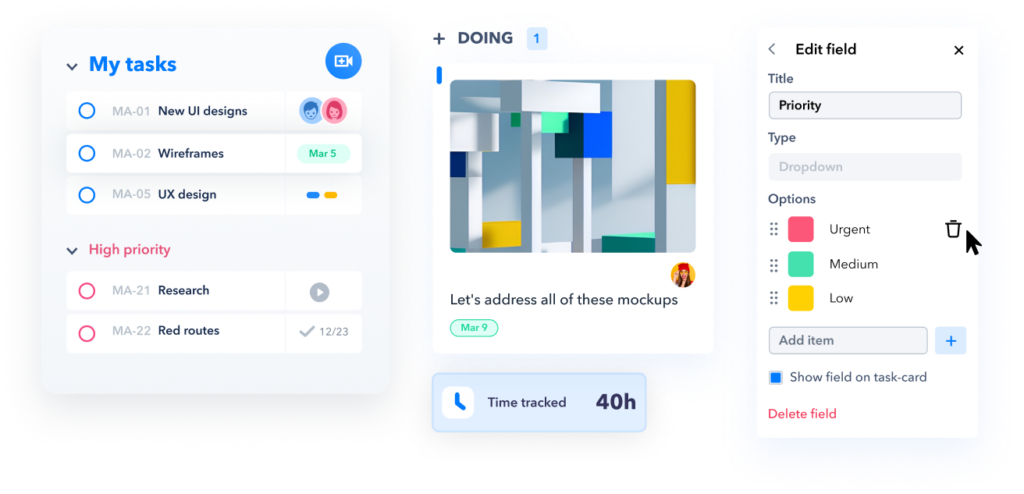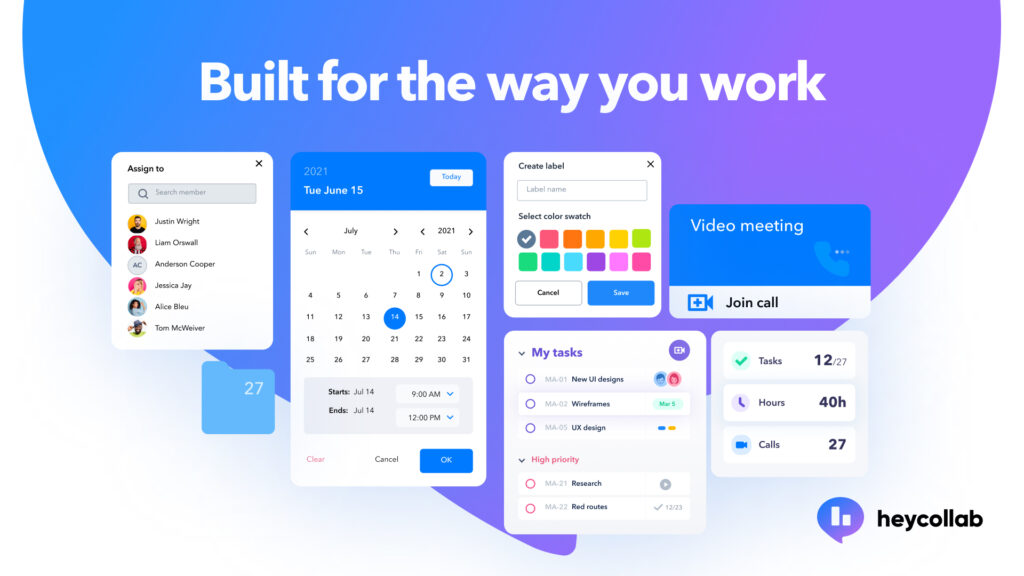Project coordination software is vital to an excellent product launch. Just as well, adequate task management, communication, and storage are also very important.
The issue many startups face is having to deal with multiple platforms and applications to take care of all of these needs. Luckily, heycollab is here to change that. Our platform is an all-in-one solution that tackles the need for team communication, collaboration, and project management.
So how does the heycollab team use heycollab to launch products? In this guide, we’ll explore how the makers and advisors themselves use the platform to push products efficiently and successfully.
First, let’s look a little more into what exactly heycollab is and what the platform has to offer.
What is heycollab?

heycollab is an all-in-one platform for task and project management, communication, and collaboration between startup team members. heycollab came about as a solution to businesses having to pay for and deal with multiple collaborative applications, such as Slack, Trello, Google Docs, etc.
When it comes to all the tools a team needs to successfully launch a product, productivity losses are a major problem. Switching between different apps on a daily basis for one project reduces productivity. The learning curves required to use multiple applications is also very problematic and productivity-reducing. Just as well, many businesses are throwing money away paying for multiple software licenses and monthly fees.
heycollab is the solution to this very common problem. For $29.99 per month (for thirty users, but we’ll get more into the pricing model of heycollab later in this guide) users can access all of a project’s files, communicate with other team members, collaborate, designate tasks, and work together in one simple and very user-friendly dashboard.
Now that we know what heycollab is and what it seeks to do, how does the team behind heycollab use their own application to launch products and keep up with projects? This simple guide highlights the benefits of heycollab and one of the most common outlines for using the platform’s features. Just about any business in any niche can use all of the following steps to use heycollab efficiently.
How to Run Successful Product Launches with heycollab
With an all-in-one solution, heycollab makes it easier than ever before to run a successful product launch. Let’s look at how heycollab’s team uses the platform to launch products with ease.
1. Create a project/client specific public or private Workspace.

This Workspace will host all your communication, tasks, projects, collaboration, and files.
One really great aspect of heycollab is the ability to host necessary files on the platform. Not only will your team be able to collaborate, communicate, and work within the Workspace you create, but they will also be able to upload and download project elements without having to leave heycollab.
Your private and public Workspaces will be listed in the left sidebar of your dashboard. You will also be able to access Workspaces in the main page of your dashboard, which features things like updates, completed tasks, new messages, etc.
2. Invite only the team-members needed for this project.
There is no need to bulk-invite team members for this specific Workspace project if they are not involved in the project. Similarly, many product launches are made up of separate miniature projects within the product. With heycollab, you only need to invite the team members that are currently working on a particular project to the designated heycollab workspace.
This eliminates confusion and excessive notifications in non-relevant team members’ inboxes, which will only further improve productivity and reduce distractions.
3. Use the messaging section for quick questions, brief status updates, and non-task specific communication.

Messaging is incredibly simple with heycollab. On your dashboard, you’ll see a search-style bar punctuated by a paper airplane button at the very top of the screen. Simply add the usernames of the team members you want to contact (preceded by an @ symbol for each user) and type out your message. You can also post public messages to the whole team as well.
There are no complicated tags to use and no hiccups when it comes to communication within heycollab. Now, team members can communicate with each other without having to click through several buttons to find a message function or find the appropriate Workspace to post to. It’s all done through that little search bar. It doesn’t get easier than this!
4. In the boards section, create your tasks within the ToDo column.

One of the coolest features of heycollab is its task boards. Within a specific Workspace, you can create multiple To-Do boards for different elements of the project, such as User Interface Design, Interactive Prototype, etc.
You can add different users to any task board, and assign any and all tasks within those task boards to the appropriate team members. You can also set due dates, add sub-tasks and images, comment, and set labels for progress. As tasks are being worked on or completed, move them to the appropriate columns by dragging and dropping.
The learning curve for our task boards is virtually non-existent. We decided to keep this aspect of project management as simple as possible and as easy to customize for a specific project as possible.
5. Add all your files in the media-hub tab.

heycollab is a cloud-based platform that makes it easy to upload and secure important files during a project. These files will be accessible to anyone who is part of a particular Workspace.
heycollab offers a number of space options. The free Freelancer account offers 5GB of storage, the Studio account offers 100GB of storage for $29.99 per month, the Agency account offers 1TB of storage for $59.99 per month, and the Enterprise account offers unlimited storage. The Enterprise account will be launched around 2023.
What do you think about how heycollab uses its own platform for product launches? Do any of our steps stand out to you as particularly useful or smart? Tell us what you think of our guide in the comments below!

